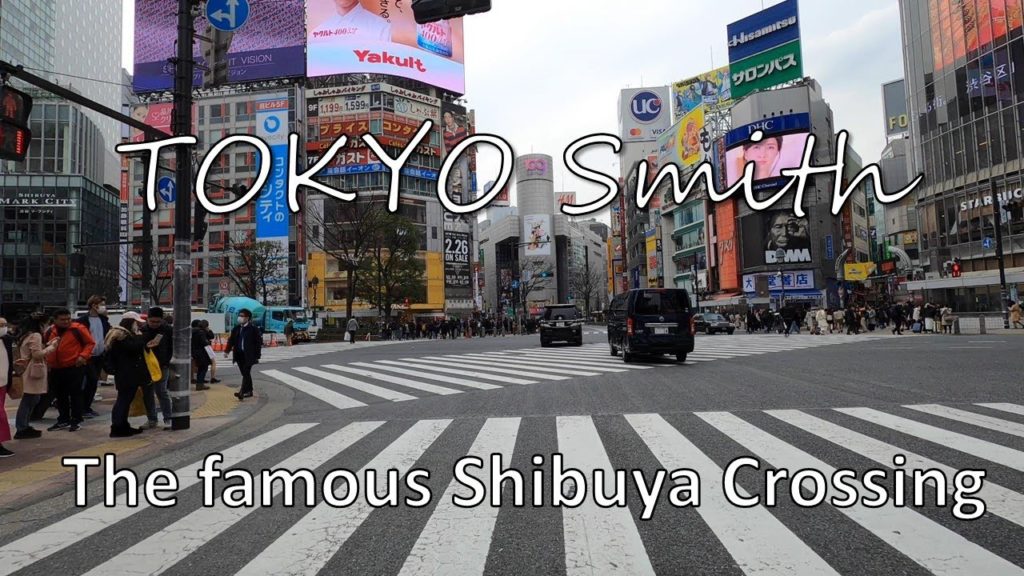#tokyosmith #tokyo #japan
We upload new videos a few times a week. Don’t forget to subscribe to our channel!
Please like, comment, and share!
Youtube:
We are also on Twitter and Instagram.
Twitter:
Instagram:
:::::::::::::::::::::::::::::::::::
About the Shibuya Crossing
Shibuya Crossing, or Shibuya Scramble Crossing, is a popular scramble crossing in Shibuya, Tokyo, Japan. It is located in front of the Shibuya Station Hachikō exit and stops vehicles in all directions to allow pedestrians to inundate the entire intersection. The statue of Hachikō, between the station and the intersection, is a common meeting place and almost always crowded.
Three large TV screens mounted on nearby buildings overlook the crossing, as well as many advertising signs. The Starbucks store overlooking the crossing is also one of the busiest in the world. Its heavy traffic and inundation of advertising have led to it being compared to the Times Square intersection in New York City and Dundas Square intersection in Toronto. Tokyo-based architecture professor Julian Worrall has said Shibuya Crossing is “a great example of what Tokyo does best when it’s not trying.”
Shibuya Crossing is often featured in movies and television shows which take place in Tokyo, such as Lost in Translation, The Fast and the Furious: Tokyo Drift, and Resident Evil: Afterlife and Retribution, as well as on domestic and international news broadcasts. The iconic video screen featured in the above movies, in particular Lost in Translation with its ‘walking dinosaur’ scene, was taken down for a period of time and replaced with static advertising, although it resumed operation in July 2013. Contemporary British painter Carl Randall (who spent 10 years living in Tokyo as an artist) depicted the area in his large artwork ‘Shibuya’, exhibited at the National Portrait Gallery in London 2013. Scramble Crossing is a major location in the video game The World Ends With You, which is set entirely in the neighbourhood of Shibuya.
The crossing was featured in the 2016 Summer Olympics closing ceremony to promote the 2020 Summer Olympics in Tokyo.
About Shibuya
The Tokyu Toyoko Line opened in 1932, making Shibuya a key terminal between Tokyo and Yokohama, and was joined by the forerunner of the Keio Inokashira Line in 1933 and the forerunner of the Tokyo Metro Ginza Line in 1938. One of the best-known stories concerning Shibuya is the story of Hachikō, a dog who waited on his late master at Shibuya Station every day from 1923 to 1935, eventually becoming a national celebrity for his loyalty. A statue of Hachikō was built adjacent to the station, and the surrounding Hachikō Square is now the most popular meeting point in the area.
The contemporary fashion scene in Shibuya extends northward from Shibuya Station to Harajuku, where youth culture reigns; Omotesandō, the zelkova tree- and fashion brand-lined street; and Sendagaya, Tokyo’s apparel design district.
About Harajuku
Harajuku (原宿) is a district in Shibuya, Tokyo, Japan.
Harajuku is known internationally as a center of Japanese youth culture and fashion. Shopping and dining options include many small, youth-oriented, independent boutiques and cafés, but the neighborhood also attracts many larger international chain stores with high-end luxury merchandisers extensively represented along Omotesando.
Harajuku Station on the JR East Yamanote Line and Meiji-jingumae ‘Harajuku’ Station served by the Tokyo Metro Chiyoda Line and Tokyo Metro Fukutoshin Line also act as gateways to local attractions such as the Meiji Shrine, Yoyogi Park and Yoyogi National Gymnasium, making Harajuku and its environs one of the most popular destinations in Tokyo for both domestic and international tourists.
About Private and commercial automobiles in Tokyo
Private and commercial automobiles account are owned by fewer individuals than in other parts of the country. Tokyo, with a population of over 13 million, in 2014 registered a bit less than 4 million vehicles.


AloJapan.com